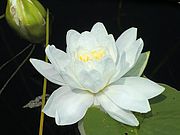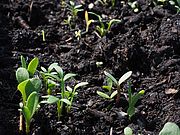Help assess Lake Champlain water conditions around the lake. Complete our cyanobacteria monitor interest form if you're interested in monitoring or want to attend a training session to learn more about the lake. Feel free to share this invite with other lake lovers.
News from Selected Month
Spring isn’t just a time when trees and flowers are coming alive – plants are also opening up throughout the ponds, lakes, and waterways. While aquatic plants may look similar to their land-bound counterparts, they have evolved to endure an environment where light is often scarce and concentrations of atmospheric gases are low. These adaptions are clearly displayed in the variations between aquatic leaves.
Soil isn’t just the dirt we might think of when we wash our hands or take our shoes off at the door. Healthy soil is alive – it’s full of layered root systems, microbial communities, organic matter, worms, bugs, and fungi. It’s an entire ecosystem that powers all life above it. It can sequester carbon, hold water, and support healthy plant life – all of which are vital to turning the tide on climate change. And, most importantly for Lake Champlain’s water quality, soil with just a 1% increase in organic matter in the top six inches can hold over 20,000 gallons of water per acre.



